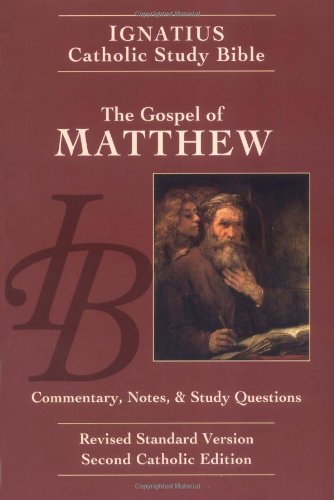
How did the New Testament writers read the Old Testament in light of the coming of Jesus Christ? This course offers an in-depth answer to that question, focusing on the use of the Old Testament in the Gospel of Matthew.
After looking at how first-century Jews interpreted the Law and the Prophets and studying patterns of interpretation found in Jesus and the New Testament writers, we’ll focus our attention on Matthew. Matthew makes more than 100 Old Testament references, ranging from direct quotes to subtle allusions. Through a close reading of many of these texts we’ll explore how the Old Testament forms an “implicit narrative” that is essential to understanding Matthew’s meaning and message.
This online Bible study is free to all registered users. Log in or create an account today to begin!
Objectives
- To understand how the Old Testament is interpreted by Jesus and the New Testament writers.
- To learn the narrative structure and “implicit narrative” of Matthew’s Gospel and to understand how that implicit narrative is essential for understanding Matthew.
- To understand the Old Testament context for many of the specific sayings and events recorded in Matthew’s Gospel.
Materials
The primary text will be the Bible. And each lesson will provide links to biblical passages cited. In addition, the instructors recommend the following, which covers much of the material to be studied in this course:
The Gospel of Matthew
Lessons
- Lesson One: Learning to Listen for Echoes: A New Approach to the New Testament
- To understand how important the Old Testament is to reading and interpreting the New Testament.
- To learn what “typology” is and to appreciate its significance for reading the New Testament.
- To understand the relationship between the writers of the New Testament and other first-century Jewish interpreters of Scripture.
- Lesson Two: Son of David, Son of Abraham
- To read Matthew 1-2 with understanding.
- To learn the Old Testament history and background behind the quotations and allusions used in the prologue to Matthew’s gospel.
- To gain a fuller appreciation of Matthew’s depiction of Jesus as a “new Moses.”
- Lesson Three: ‘Not to Abolish, But to Fulfill’
- To read Matthew 3-7 with understanding.
- To understand the Old Testament background and allusions in Matthew’s depictions of John the Baptist, the Baptism of Jesus and His temptation in the wilderness.
- To understand the crucial importance of Jesus’ summary in the Sermon on the Mount: “Do not think that I have come to abolish the law or the prophets. I have come not to abolish but to fulfill.”
- Lesson Four: Healing and Restoration
- To read Matthew 8-10 with understanding.
- To understand the Old Testament background and allusions in Matthew’s depiction of Jesus’ healings and other miracles and the growing tensions with the scribes and Pharisees.
- To understand how Matthew uses evocations of select Old Testament prophets to convey that in Jesus, the long-anticipated “restoration” of Israel has begun.
- Lesson Five: Riddles of Rejection, Rock of Foundation
- To read Matthew 11-18 with understanding.
- To understand the Old Testament background to Jesus’ teaching in parables.
- To understand the deep Old Testament context by which Matthew conveys that Jesus is the long-awaited Messiah and the Church is the restoration of the Davidic Kingdom.
- Lesson Six: David’s Son, David’s Lord
- To read Matthew 19-28 with understanding.
- To understand the Old Testament background to Matthew’s depiction of Jesus’ entry into Jerusalem, His Passion and death.
- To understand the deep Old Testament context by which Matthew conveys that Jesus is the long-awaited “Son of David” and the “Son of God.”
Lesson Objectives
Log in or create an account to begin.
Lesson Objectives
Log in or create an account to begin.
Lesson Objectives
Log in or create an account to begin.
Lesson Objectives
Log in or create an account to begin.
Lesson Objectives
Log in or create an account to begin.
Lesson Objectives
Log in or create an account to begin.
Getting Started
Whether you're studying Scripture for the first time, looking to take your studies to a higher level, or whether you're ready for advanced training, you've come to the right place!
How to Use the Courses
Work at your own pace: All courses and each individual lesson will be archived and can be read or printed at any time.
Tips for Learning
Read each lesson as well as the Bible passages and other resources the instructor recommends. Taking notes will help you remember what you read. Then answer the study questions.
